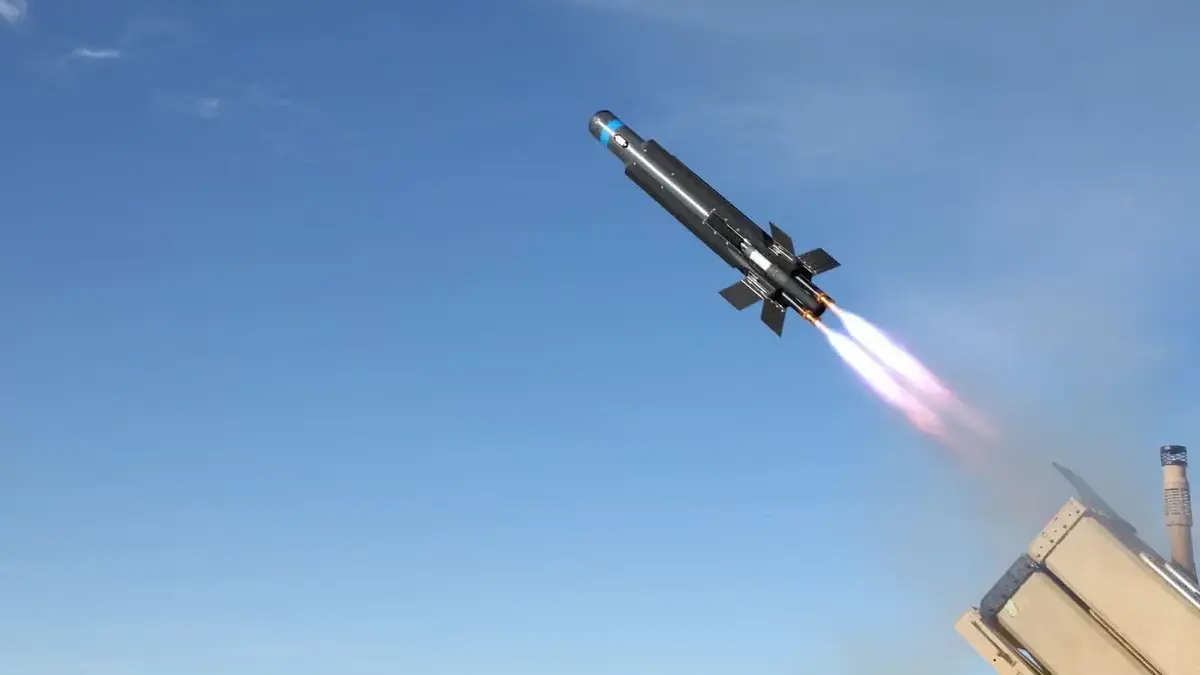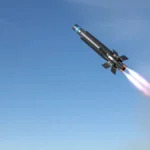This award will help finalize design updates for the Coyote Block 3 drone as the Navy works to enhance its intelligence, surveillance, reconnaissance, and strike capabilities.
The project will focus on completing configurations and preparing technical documentation, building test units, and testing an improved payload system, a new launch module, fire control setup, and related support equipment. This work will also include flight testing to support development tests and operational demonstrations, ensuring the drone meets the latest performance and mission requirements.
Raytheon’s Coyote Block 3: Reusable Non-Kinetic Solution Takes Down Drone Swarms
Raytheon Missiles & Defense announced the successful interception of a drone swarm using its reusable Coyote Block 3 non-kinetic effector during a U.S. Army trial. The demonstration brings the system closer to operational deployment.
Built on the expendable Coyote loitering munition, the Block 3 uses a non-kinetic warhead to disable hostile drones while minimizing collateral damage. Unlike the expendable version, this non-kinetic model can be recovered, serviced, and reused without leaving the battlefield.
In the exercise, the Coyote engaged and disabled a swarm of 10 drones that varied in size, capability, agility, and range. The test achieved multiple key milestones:
• Air-to-air non-kinetic neutralization;
• Recovery, refurbishment, and reuse during the same incident;
• Launch success from the Coyote Block 2 platform;
• Long-range engagement, communications and KuRFS radar tracking.
Layered Air Defense
The US Army has placed significant emphasis on Coyote technology and intends to acquire approximately 6,700 Coyote interceptors for its layered air defense setup. The Coyote systems will operate in conjunction with the Mobile-Low, Slow, Small Unmanned Aircraft Integrated Defeat System (M-LIDS) and Fixed Site-LIDS (FS-LIDS). The total inventory includes 6,000 jet-powered Block 2 Coyotes with radar guidance and 700 Block 3s with quiet electric motors and non-kinetic payloads.
The M-LIDS setup utilizes two specially modified Mine-Resistant Ambush Protected All-Terrain Vehicles (M-ATVs). They serve as electronic warfare platforms with advanced sensors and communications gear, responsible for detecting and tracking aerial threats. The second vehicle handles the kinetic defeat mission, taking out the drone after it is identified. This version uses a Ku-band Multi-Function Radio Frequency System (KuMRFS-M) for detection, an XM914E1 30mm cannon, an M240 7.62mm machine gun, and the Coyote Block 2+ system.
When these elements work together, they create multiple layers to detect, intercept, and destroy UAS threats. In contrast, the FS-LIDS is a fixed-position system with an upgraded Ku-band radar and high-end sensors. It can fire multiple Coyote interceptors and can be quickly moved as needed, allowing for flexible defense options. Across platforms and military branches, Coyote interceptors remain a strong tool against new and evolving unmanned threats.
That work was scheduled to be completed by February 26, 2024.
In April 2022, the Department of Defense announced that the company had received a $10 million contract amendment to design, build, and integrate the Coyote Block 3 launch tube assembly into the UUV; to provide and deliver air systems for the UUV demonstration; and to provide systems engineering, integration, and test support for both the “High Volume Long Range Precision Strike (HVLRPS)” from USVs and Fire (HVLRPF).
Raytheon was also asked to provide field support staff, manage test preparation, coordinate safety, manage program management, and optionally integrate government-supplied equipment for forward payloads and tests.
The work was expected to be completed by November 28, 2023.
The Block 3 is based on the original Coyote loitering munition, also known as a kamikaze drone. According to Raytheon, the original model “can fly alone or in a swarm,” and is “flexible for missions such as surveillance, electronic warfare and strike,”
“Built from the expendable Coyote loitering munition, the Block 3 uses a non-kinetic warhead to disable enemy drones, reducing potential collateral damage. Unlike the expendable version, the non-kinetic variant can be recovered, refurbished and reused without leaving the battlefield,” Raytheon explained.
FAQs
The Coyote Block 3 is a reusable drone built from the original Coyote loitering munition. Unlike the expendable version, it has a non-kinetic warhead that disables enemy drones without causing additional damage. After the mission, it can be recovered, refurbished, and reused, making it cost-effective and safe for complex operations.
In US Army tests, the Coyote Block 3 successfully disabled swarms of 10 drones of various sizes and capabilities. Its long-range radar tracking, communications systems, and non-kinetic payload allow it to quickly target multiple drones, providing a robust tool for modern air defense against swarm attacks.
The Coyote Block 3 is part of the U.S. Army’s layered defense, working with systems such as M-LIDS and FS-LIDS. These systems combine radar, sensors, and interceptors to detect, track, and defeat unmanned threats. The Block 3 adds a reusable, low-collateral option to this setup, increasing flexibility and mission success.
Yes! Although primarily designed for defense, the Coyote drone is also versatile for surveillance, reconnaissance, and electronic warfare. The non-mobile Block 3 is particularly useful for operations where damage reduction is critical, making it relevant to both the military and emerging tech trends in drone-based intelligence missions.








Leave a Reply